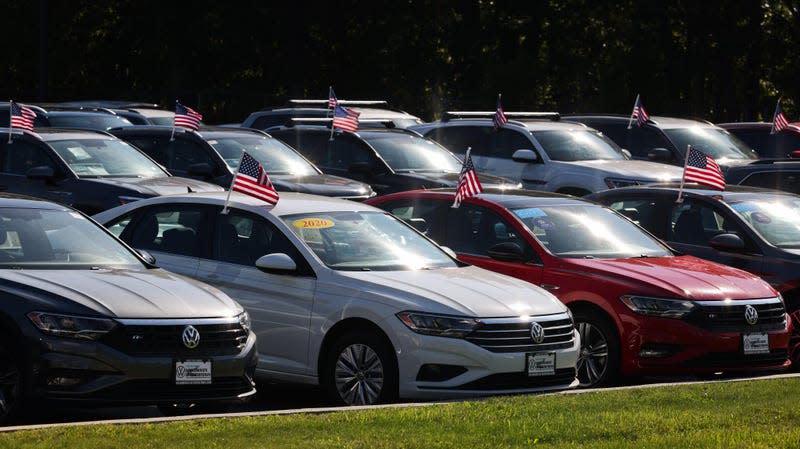The Used Car Market Remains in Chaos

Manheim, which is the biggest wholesale car auction house in the U.S., publishes a used car value index every month based on its auctions, which showed Monday that wholesale used car prices went up 0.8 percent in December, compared to November, but went down 14.9 percent compared to December last year. That latter figure, Manheim says, is the “largest annualized decline in the series history,” which goes back to the 1990s. This might lead one to believe that on the street, prices for used are falling, too, but, as my colleague Tom McParland recently noted about new cars, don’t get too excited just yet.
That’s because while 14.9 percent is a big number, it only partially alleviates the big increase in total that used car prices went up since the pandemic started, because of a lack of new inventory squeezing the used market, a squeeze that people who study these things expect to somewhat ease in 2023.
Read more
From Automotive News:
“While that [15 percent] decline was the largest in the series’ history, compare that drop to the overall 88 percent increase in the 21 months from April 2020 to January 2022,” said Chris Frey, senior manager of economic and industry insights at Cox Automotive, during a Monday quarterly insights call.
So: Wholesale used prices are down, but still elevated. Auto News also has some more bad news:
Used-vehicle demand could stabilize and improve midyear as lower wholesale prices trickle through and create more affordable buying opportunities, according to [Cox Automotive Chief Economist Jonathan Smoke]. If interest rates stop increasing, that could cause consumers’ monthly payments to smooth out, too, he said.
There also is a likelihood that the market remains supply-constrained, putting “a floor under values” just as used-car prices return to some normalcy, Smoke said. He predicted wholesale prices could ultimately end 2023 down 4.3 percent from their December 2022 level.
So: The used market could get better, or it could get slightly better, or it could stay the same, depending on interest rates, depending on automaker production, or depending on where the economy is at for the next 12 months, with lots of people saying the r-word a lot recently, though that not happening just yet, for reasons economists pretend to understand.
For you and me, who are humble car buyers, or at least humble car lookers, this amounts to a frustrating mixed message. If you’re lucky enough to be able to afford to wait to buy a car, that is probably still best practice, and if you’re unlucky enough to need to buy a car, there isn’t much choice anyway. If you’re one of those guys who tries to time the market, I wish you the best of luck.
One day we’ll get back to normal, I’m pretty sure, though not just yet. But don’t take it from me, take it from Carlos Tavares, who is CEO of Stellantis.
“There’s a rebalancing taking place right now: an improved chip offering and slower car demand, due to the higher interest rates and tougher access to credit,” Tavares said recently, according to Bloomberg. “This rebalancing means that used-car prices are going back to where they always were, which means a business that’s profitable but that has to be managed with a lot of precision.”
More from Jalopnik
Sign up for Jalopnik's Newsletter. For the latest news, Facebook, Twitter and Instagram.

 Yahoo Autos
Yahoo Autos 